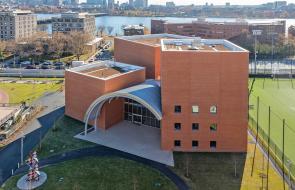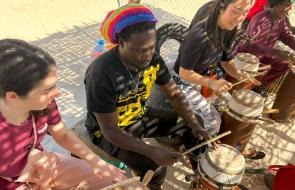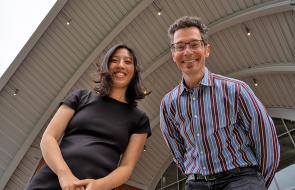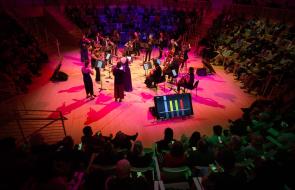KAOLACK, Senegal – The MIT students have just finished dinner and are crumpling soda cans into trash bins when they get the summons: “Grab your drums, grab your drums, grab your drums …”
It is time for the tanibeer, a nighttime drum and dance party, in Kaolack, a town amid salt plains and peanut farms located 220 kilometers southeast of Dakar, Senegal’s capital. For the members of Rambax MIT, the Institute’s Senegalese drumming ensemble, the excitement is palpable as they fetch their drums and make their way up the road. Their destination is a small field on the family land of their director, Lamine Touré, who comes from a long line of griots, the musicians and oral historians of the Wolof people.
Touré, a Senegalese master drummer and an MIT lecturer in world music, cofounded Rambax in 2001 with Patricia Tang, an associate professor and ethnomusicologist who specializes in West African music. It began as an extracurricular group to teach students and other members of the MIT community the art of sabar, a vibrant West African drumming and dance tradition. Today, Rambax is a credit-bearing class (21M.460) enrolling as many as 50 students a semester, and its ensemble’s performances draw audiences from MIT and the wider Boston community.
During Independent Activities Period (IAP), 16 members of the ensemble joined Touré and Tang on a two-week study tour in Senegal, the birthplace of the music that inspires Rambax. In addition to performing, the students attended drumming classes and dance workshops taught by expert Senegalese drummers, and they experienced sabar drumming within its traditional and cultural context in Dakar and Kaolack.




